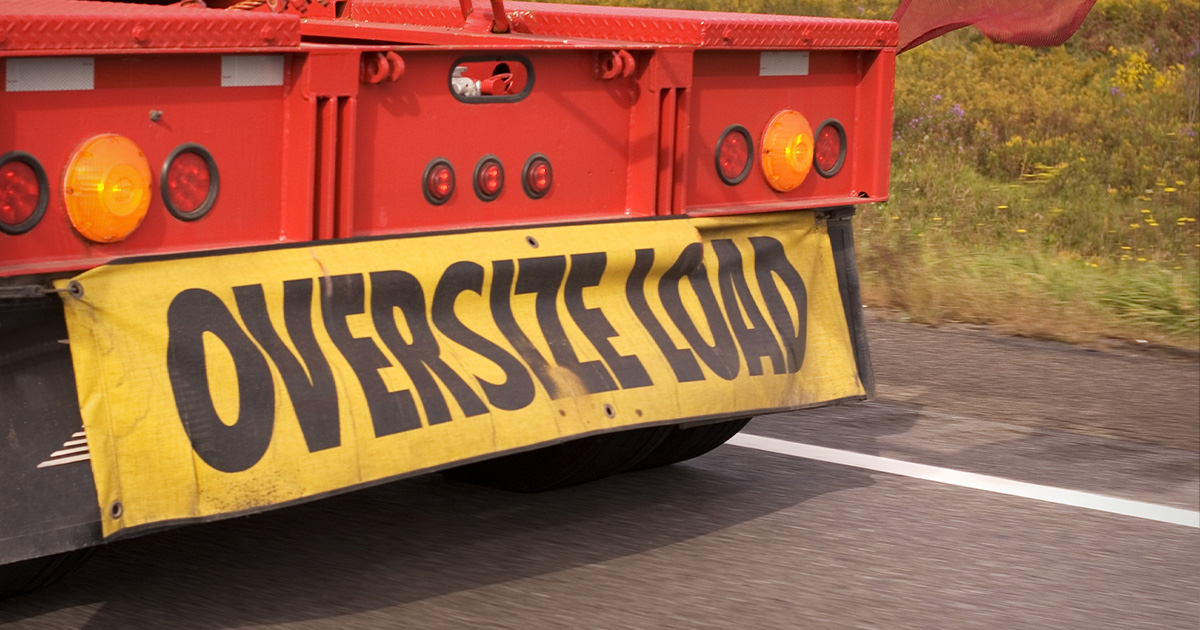
As reported by the Insurance Institute for Highway Safety, 1 out of every 10 deaths on the highway involve a large truck, and approximately 68% of those killed in the accidents were the occupants of smaller passenger vehicles and cars.
The most unfortunate part of this is that many of the accidents could have been avoided if drivers knew how to share the road safely with large trucks. Although vehicles big and small all follow the same driving laws, it is easy to forget that truck drivers face many challenges each time they sit behind the wheel. Their long hours combined with poor or limited maneuverability make up the perfect storm for a disaster, and only the use of defensive driving techniques can keep everyone safe.
To reduce your chances of being involved in an accident with a large truck, be sure to follow these safety tips for driving near a diesel vehicle.
ALWAYS ASSUME THE DRIVER CANNOT SEE YOU
Most truck, van and car mirrors are designed to maximize a driver’s field of vision. You can actually adjust your mirrors in a way that you should be able to eliminate most, if not all, of your blind spots.
Larger trucks, trailers and diesels however do not have that same ability. These heavier vehicles do have 8 to 10 mirrors to help improve their visibility, however the sheer length of these vehicles means the driver will have blind fields, not blind spots. A typical blind field will sit 10 feet in front of and 25 feet behind the truck. The blind fields may include the area diagonally back from the driver’s seat and the two traveling lanes to the right side of the vehicle.
You should assume that if you cannot see the truck driver’s face, either in the mirror or in the window, that it is likely the driver cannot see you.
YOU SHOULD NOT SHOOT THE GAP
If you are not comfortable driving close to large trucks, you may be tempted to accelerate and try to put some space behind you. You may even try to pass the truck as quickly as possible, sliding into the next available space in front of the truck. You do not want to spend too much time in the truck driver’s rear blind spot, am I right?
However, in your attempts to avoid this, you could put yourself more at an even greater risk than having stayed calmly and patiently in the same lane.
Big trucks need approximately three times more stopping distance than the average car. Drivers leave large gaps between themselves and the vehicle in from of them for safety purposes. This allows them to have adequate time to brake without rear-ending other drivers. When you quickly shoot into that open space, not only are you limiting the truck driver’s available stopping distance, but you are also slipping into the driver’s front blind field.
In an effort to remain safe, you should maintain a consistent speed and accelerate only when necessary. You should give trucks plenty of space when you pass and make slow and steady movements when you change lanes. Do not forget to use your signal early, giving the truck driver plenty of time to respond to your movements.
PLEASE EXERCISE A LITTLE PATIENCE
Trucks with diesel engines are designed for power. They have the ability to haul thousands of pounds over long distances. Many trucks can easily get up to 120 mph on an open road. You may ask, why do they seem to mosey along at a consistent 75 mph, or sometimes a mere 65 mph, when clearly, they have plenty of space and power to go faster?
Many companies install speed limiters on trucks. These safety regulations, limiters, can prevent the vehicle from traveling faster than the trucks air brakes can safely handle, plus it helps the truck drivers maintain more fuel-efficient speeds. Because of the limiters, truck drivers cannot accelerate beyond their vehicles set threshold, no matter how much cursing, honking, or tailgating you do.
Therefore, if you are stuck behind a big truck, please exercise a little patience, and remember the truck driver is doing their very best under the circumstances.
PAY COMPLETE ATTENTION TO THE ROAD
When traveling, truck drivers have a lot to manage. They have multiple mirrors that they are constantly checking. They have endless amounts of gauges that need to be monitored. And, when they are driving in an unfamiliar area, they will also have to watch their GPS system. Most truck drivers do their best to keep track of all their various systems, but they will have to divide their focus from time to time and their response times could suffer as a result of having to do this.
If you want to be safe around large trucks, you should compensate for any shortcomings on the truck driver’s part and pay attention to the road whenever you are driving. Do not text. Do not use your smartphone. Pull over if you need to update your navigation system. Turn down the volume of music and movies in the car that could be distracting.
STAY SAFE ON THE ROADS
If you follow these safety tips along with local and federal driving laws, you should be able to significantly reduce your risks.
However, if you have taken extreme caution when driving, you could still encounter a negligent driver. And, if that happens and you have been involved in an accident involving a large truck, you need to reach out to an attorney experienced in trucking accident law. The law firm of Hardee, Massey & Blodgett is very experienced with trucking accidents and they can help you navigate the complicated legal system to ensure you receive the compensation for injuries and damages that you may deserve
